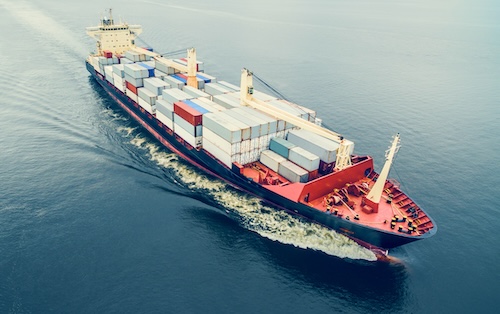Emerging Trends in SCL Shipping: What to Expect in the Future

Shared container load (SCL) shipping continues to provide a unique alternative for shippers who are not eager to leverage the full container load (FCL) shipping option but their cargo or shipments are too large for the traditional less-than-container load (LCL) shipping alternative. SCL shipping allows businesses to have all the FCL shipping experience without any of the downsides of LCL shipping, such as too much handling and the risk of damages. This approach contributes significantly to global shipping efficiency, making it a preferred option for many businesses.
However, as shippers continue to explore the benefits of the SCL shipping option, new shipping trends and innovations are emerging that could make the future outlook of the entire operation very interesting for all stakeholders. For instance, the types of businesses relying on it and why they continue to do so. This article will analyze these market trends and review the innovations transforming the shared container load in shipping option for shippers and stakeholders.
4 Market Trends Shaping The Future of SCL Shipping

As SCL shipping continues to rise in popularity for shippers with large shipments that cannot quite fill an entire container load, various trends are emerging across the freight market and shaping the attraction to the shared container load shipping option. Some of these trends in international shipping include:
1. Booming International Trade
Despite the rise in inflation, trade wars, and geopolitical crises impacting international trade, there have never been more volumes shipped between countries than today. More businesses continue looking to international markets to expand their businesses and customer base, while others are leveraging the markets for affordable labor and raw materials. Whatever their reasoning, one thing is clear: international trade is here to stay.
However, these businesses have to decide which shipping option works best for them. While traditional shipping methods, including LCL and FCL shipping, have their benefits, SCL shipping allows them more control without paying as much, including in terms of damages and the general cost of the shipping operation. There is also less handling like the average LCL shipping, which can be a time waste and expose the shipments to damage. This makes SCL an excellent choice for businesses looking to optimize global shipping efficiency.
2. Supply Chain Disruptions
As the geopolitical crisis continues to be a main feature in today’s international shipping operations, supply chains are increasingly exposed to the threat of downtimes and disruptions. That means there has never been a better time for a more reliable and flexible shipping option, which is why SCL shipping continues to attract more shippers. It allows these shippers to ship just enough to continue operations seamlessly but not so much so that they do not lose so much of their resources if there are any issues.
SCL Shipping buffers these companies. With the shipping option, shippers do not have to put all their eggs in one basket, but just enough so that the supply chain can operate resiliently even in the face of mounting tensions and continued supply chain challenges. This further highlights the SCL benefits for maintaining operational flexibility.
3. Sustainability Concerns
When a shipment or cargo is too large for LCL shipping but too small for FCL shipping, shippers used to choose the FCL shipping option because it was cheaper and offered them more control. However, this creates a sustainability problem because these shippers had to ship half-empty containers, leading to more containers generally being shipped and, therefore, more shipping trips. But that doesn’t have to be the case anymore with SCL shipping.
Shippers can consolidate with other shippers carrying the same volume through shared container load shipping and leverage only one container rather than two. This way, they can reduce the overall number of containers involved in international trade, forcing carriers to make fewer trips to accommodate all the demands. As far as sustainability is concerned, it is a win for all stakeholders, including those at the ports. This contributes to global shipping efficiency and aligns with sustainable shipping trends.
4. Technological Advancements
SCL freight generally comes with some complications, such as finding shippers shipping the same volume and the same category of products. However, with tech solutions, it is relatively easier to find these shippers and pair them. Digital freight forwarding solutions like Silq make these happen with relative ease. Beyond finding potential shipping partners, it also helps shippers manage the entire operation from start to finish.
Features that make this possible are tracking solutions to enable transparency throughout the entire shipping process, customizable workflows for speed and efficiency, and digital documentation to simplify the entire documentation and clearance process during the shipping process.
How Silq Helped an E-commerce Business Streamline Its Shipping Operations
The logistics arm of e-commerce was in dire straits. They were constantly juggling the challenges of fluctuating demand, tight deadlines, and unpredictable shipping costs. After several rolled shipments within one month at the port, they knew the company needed help, and it needed it fast.
Knowing there was a better way, the head of logistics began scrolling through countless carrier websites and freight forwarding quotes. That's when she stumbled upon Silq, a digital freight forwarder promising a new approach to shipping: Silq's shared container load in shipping option intrigued her, and she decided to give it a try to determine if they were the right fit.
The onboarding process was surprisingly simple, and within days, the entire logistics team had access to Silq's intuitive platform. It was a refreshing change from the endless spreadsheets and confusing emails they were used to. Silq's SCL solution promised guaranteed weekly sailings, meaning no more rolled shipments. Sharing container space with other vetted businesses felt somewhat unconventional, but the potential cost savings and improved reliability were too tempting to ignore.
The first SCL shipment went smoothly. Silq delivered as promised, providing real-time visibility into the shipment's progress, and Silq's team kept them informed every step of the way. The cargo arrived on time and in perfect condition, a welcome relief after months of shipping headaches.
As the logistics team continued to leverage Silq's SCL service, they noticed a significant improvement in their supply chain operations. The predictability of weekly sailings allowed for effective planning, leading to efficient inventory management and reducing the risk of stockouts and overstocking.
Silq had not only changed how the team shipped their products but also how they thought about logistics. Logistics was no longer a source of frustration but a strategic advantage, enabling them to focus on what mattered most—growing the business and delighting its customers.
Why Leverage Silq’s SCL Shipping Solution?

Traditional ocean shipping options aren't always a good fit for larger shippers. LCL (Less than Container Load) can mean slowdowns and customs headaches, while shipping services like FCL (Full Container Load) force you to pay for space you don't need. However, Silq's SCL shipping changes the game.
With Silq, the business has the following advantages:
- Shared Payment: Split a container with other trusted businesses. You only pay for the space your cargo takes up.
- Fast and Reliable: Your shipment sails within 5 days of being ready, no waiting around for others to fill the container.
- Keep Your Inventory Moving: Ship smaller, more frequent loads - no need to hold onto goods until you have a full container.
- Reduce Risk: Spread your shipments across multiple containers to avoid putting all your eggs in one basket.
Get Started today.
Ready for Supply Chain Predictability?
Importers using Silq ship smarter, safer, and with total control.







